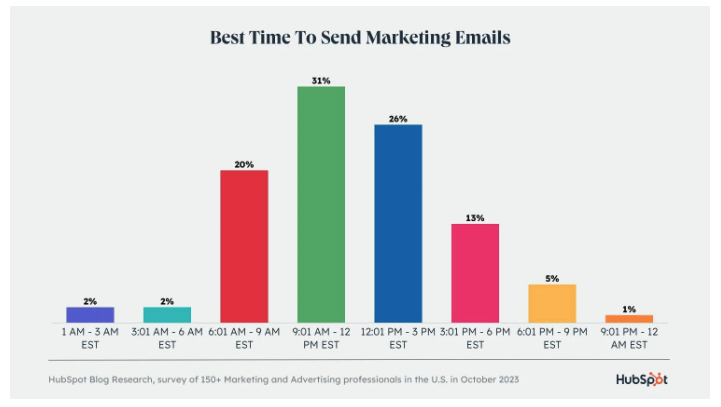The Art of Crafting an Engaging Newsletter for Financial Advisors
La communication clients est un maillon essentiel du métier de CGP. En 2024, une des meilleures façons de rester en contact avec ses clients et de partager ses connaissances est de créer une newsletter efficace. Il faut savoir que la conception d'une newsletter qui capte l'attention de ses lecteurs et qui permet de renforcer votre image de marque n'est pas une tâche facile. Dans cet article, nous allons explorer l’art d’une newsletter réussie spécifiquement pour un conseiller en gestion de patrimoine.
In this post, we'll cover the following points:
Define your newsletter objectives
Choosing what to write for your customers
Create an attractive, professional design
Writing catchy subject lines
Personalize your messages for each customer segment
Include clear calls to action
Optimize mailing frequency and timing
Analyze key metrics and adjust your strategy
Mistakes to avoid when creating your newsletter
Introduction
Connaissez-vous l’expression : « Il est moins cher de conserver un client que d'en acquérir un nouveau. » Cet adage souligne l'importance de la fidélisation client dans la stratégie de croissance d’un cabinet de gestion de patrimoine. Un CGP qui bénéficie d'une clientèle stable et fidèle aura des meilleurs résultats, autant par ses mandats sous gestion que par les recommandations clients qui en découlent.
Le métier de conseiller en gestion de patrimoine est forgé sur la communication, le relationnel et l’affinité. C’est pour cette raison que le bouche-à-oreille a longtemps été le canal préféré des CGPs pour augmenter leur portefeuille clients. Mais le bouche-à-oreille a ses limites, car il ne se contrôle pas. Il existe néanmoins des techniques pour le favoriser qui ne nécessitent pas de connaissances en prospection digitale. C’est ce que nous allons examiner dans cet article.
Define your newsletter objectives
Before embarking on the creation of your newsletter, it's essential to clearly define your objectives. A newsletter without a clear purpose risks lacking coherence and relevance for your readers. Here are some common objectives for a wealth management newsletter:
Strengthen your brand image and credibility
Share your knowledge and expertise
Promote your services and offers
Retain your existing customers
Generate new leads
Once you've defined your objectives, you can design a newsletter that's aligned with them and offers real added value to your readers. It's important to note that your objective shouldn't simply be to get people to open your newsletter. Your objective must have a clear link with your firm's performance.
Choose content that is relevant to your customers
Content is the central element of your newsletter. It must be carefully selected to meet your customers' needs and expectations. Here are a few types of content to consider:
Industry news: keep your customers informed of the latest trends, regulations and important events in the wealth management industry.
Expert advice: share your knowledge and expertise in the form of articles, guides or FAQs.
Case studies: present concrete examples of successful situations to illustrate your approach and skills.
Upcoming events: let your customers know about any conferences, seminars or workshops you're organizing or attending.
Customer testimonials: highlight positive feedback from your satisfied customers to build trust.
I advise my customers to finalize their editorial strategy before starting a newsletter, as content creation can seem time-consuming without a strategy or structure. Make sure you vary the types of content to keep your readers interested and cater to their different interests. In addition, don't forget to include links to additional resources or relevant blog posts to delve deeper into the topics covered.
Another option, provided by Les Echos Publishing, allows you to send out information newsletters that decipher the essential regulatory and legal news for your company. It's a cost-effective option, but lacks personalization. I receive one from a service provider and I must confess I never open it.
Create an attractive, professional design
The visual appearance of your newsletter is just as important as its content. A clean, professional design will reinforce your brand image and encourage your readers to engage with your content. Here are some key elements to consider:
Graphic charter: respect your company's color codes, fonts and logo for visual consistency.
Clear layout: opt for an airy structure, with well-defined sections and a clear visual hierarchy.
Quality images: integrate relevant, high-quality images optimized for optimal display on all media.
Responsive design: make sure your newsletter adapts perfectly to different devices (computers, tablets, smartphones).
Take inspiration from the newsletters you receive and show your personality. The newsletter allows you to create a direct link with your customer/prospect. You have the opportunity to show your personality and communicate your values at times that you control. Using online design tools such as Canva can also help you create an attractive design without requiring any particular technical skills.
Writing catchy subject lines
The subject line is the first thing your readers will see in their e-mail inbox. It's therefore a crucial element in encouraging them to open your newsletter. Here are a few tips for writing effective subject lines:
Be concise and direct: don't hesitate to get straight to the point with a few catchy words.
Evoke a benefit or solution: highlight the added value your newsletter will bring to your readers.
Use numbers or data: figures and statistics attract attention and reinforce credibility.
Ask an intriguing question: arouse your readers' curiosity by engaging them directly.
Don't forget to test different formulations to identify those that work best with your audience. Using e-mail analytics tools, such as Mailchimp, can help you track the performance of your subject lines and optimize them accordingly.
DID YOU KNOW
According to a study by OptinMonster, 99% of people who use e-mail check it every day, up to 20 times a day.
And according to another study by McKinsey & Company, companies that succeed in personalizing the customer experience by using newsletters see their retention rates increase by 10% and their revenues by 30%.
Personalize your messages for each customer segment
Your customers have different profiles, needs and expectations. To maximize the impact of your newsletter, we recommend segmenting your database and personalizing your messages according to these segments. Here are some examples of segmentation:
Demographic profile: age, family situation, income level, etc.
Financial situation: savers, investors, retirees, etc.
Interests: real estate, financial investments, inheritance, etc.
Relationship history: existing customers, prospects, former customers, etc.
By adapting the content and tone of your newsletter to each segment, you'll considerably increase its relevance and impact on your readers. The use of customer relationship management (CRM) tools can help you manage your segmentation efficiently and automate the sending of your personalized newsletters.
Include clear calls to action
An effective newsletter doesn't just inform, it must also encourage your readers to take action. That's why it's essential to include clear, attractive calls-to-action (CTAs). Here are a few examples of relevant calls to action:
Make an appointment
Download a guide or white paper
Register for an event or webinar
Follow your accounts on social networks
Share your content with their network
Make sure your calls to action are visible, concise and motivating. But don't overdo it, either, to avoid overloading your newsletter. Each call to action must be linked to the objective of your newsletter and offer added value to your readers.
Optimize mailing frequency and timing
The frequency and timing of your newsletter are crucial elements to consider. Too high a frequency may bore your readers, while too low a frequency may make them forget you exist. It is generally recommended that wealth management advisors send out a monthly or quarterly newsletter in addition to their monthly performance reporting.
In terms of timing, it's best to send your newsletter at a time when your readers are likely to be available to read it. According to several studies, the best times to send a newsletter are Tuesday and Thursday mornings. However, don't hesitate to test different days and times to identify those that generate the best open and click-through rates for your specific audience.
Analyze key metrics and adjust your strategy
Once your newsletter has been sent out, it's important to track its performance and analyze key metrics. This will enable you to adjust your strategy according to the results obtained, and continually improve the effectiveness of your newsletter. Here are a few metrics to track:
Open rate: the percentage of recipients who opened your newsletter.
Click-through rate: the percentageof recipients who clicked on a link in your newsletter.
Unsubscribe rate: the percentage of recipients who have unsubscribed from your newsletter.
Conversion rate: the percentage of recipients who carry out the desired action (e.g. book an appointment, download a guide, etc.).
Using email analytics tools, such as Mailchimp or Google Analytics, can help you track these metrics and gain valuable insights into your readers' behavior.
Mistakes to avoid when creating your newsletter
Finally, it's important to consider some common mistakes when creating your newsletter. Here are some of the most common mistakes to avoid:
Lack of personalization: a generic newsletter that doesn't take into account your customers' specific needs and interests is likely to lack relevance and engagement.
Overly promotional content: while promoting your services is a legitimate goal, a newsletter that's too focused on selling risks turning off your readers. Be sure to balance promotional content with useful, educational information.
Untidy or unprofessional design: an untidy or unprofessional design can damage your brand image and make your newsletter difficult to read.
Boring or misleading subject lines: a boring subject line can reduce your open rate, while a misleading subject line can frustrate your readers and damage your credibility.
Inconsistent sending frequency: sending newsletters at irregular intervals can confuse your readers and harm your engagement rate.
By avoiding these mistakes and following the advice in this article, you'll be able to create an effective newsletter that reinforces your brand image, engages your customers and supports your marketing objectives.
In summary, creating a successful newsletter for wealth management advisors involves defining clear objectives, choosing relevant content, creating an attractive design, writing catchy subject lines, personalizing your messages, including clear calls to action, optimizing the frequency and timing of sending, analyzing key metrics and avoiding common mistakes. By following these steps, you'll be able to create a newsletter that engages your customers, reinforces your brand image and supports your marketing objectives.
If you don't have the time to write your own newsletter, or if you'd prefer to entrust this task to an email marketing expert, let us know about your project by contacting us.
Subscribe to our our newsletter to receive our articles as soon as they are published.
FAQs
Why is a newsletter important for a wealth management advisor?
A newsletter helps keep in touch with customers, reinforces brand image, shares knowledge and builds loyalty among existing customers, while generating new leads.
What are the key elements in creating an effective newsletter for a wealth management advisor?
Key elements include defining clear objectives, choosing customer-relevant content, attractive and professional design, eye-catching subject lines, and clear and motivating calls to action.
How do you personalize a newsletter to maximize its impact with wealth management customers?
Personalize the newsletter by segmenting your audience according to criteria such as demographic profile, financial situation, or interests, and tailor content and tone to each segment to increase its relevance and impact.
What is the best frequency to send out a wealth management newsletter?
We recommend sending a monthly or quarterly newsletter, in addition to performance reporting, to maintain regular engagement without overloading readers.
What common mistakes should be avoided when creating a newsletter for a wealth management advisor?
Avoid a lack of personalization, overly promotional content, haphazard design, boring or misleading subject lines, and inconsistent sending frequency to keep your readers interested and engaged.





